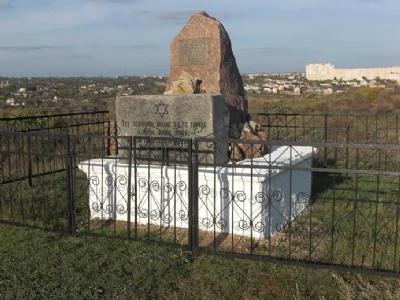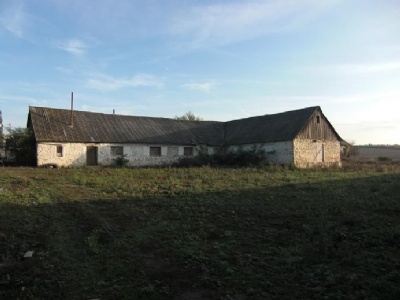Bogdanovka
About 150 kilometres northeast of Odessa lies the small village of Bogdanovka at the river Bug. Between 1941 and 1944, Bogdanovka was part of a district called Golta. Golta in turn was part of a larger area called Transnistria, controlled by Romania. Jews living in Romanian territory were deported in 1941 to Transnistria in order to make Romania free of Jews. The Jews were interned in all kind of camps and one of them was in Bogdanovka. This camp was set up in October 1941 by order of Golta district governor, Modest Isopescu. Jews incarcerated came from Bukovina, Bessarabia and Odessa. No barracks were set up, instead the Jews who were locked in pig sties and barns without any heating or sanitary facilities. The camp was also not surrounded by a fence. In mid-December 1941, a typhus epidemic erupted among the approximately 55,000 Jews in the camp. There was an imminent risk that this would spread, not only within the camp, but also to its surroundings. Therefore the camp administration decided to murder all Jews.
On December 21, romanian military and police, ukrainian police and volunteers began to murder the Jews. About 5,000 infected with typhus and others unable to move were murdered in two stables set on fire. The remaining were forced in groups of 400 to marsch to the prepared execution site next to river Bug. The Jews were forced to undress and run to the mass grave where they were shot and buried. In some cases, the killers also used hand grenades. The killings continued until Christmas when a break was made for a few days, probably due to Christmas celebrations. The killing resumed December 28 and lasted until early January 1942. About 50,000 Jews were murdered (plus the 5,000 burned inside) in just under 14 days. This makes the Bogdanovka massacre the single largest massacre of Jews during the entire Second World War.
Current status: Partly preserved/demolished with monument (2009).
Location: 47°48'59.4"N 31°09'02.5"E
Get there: Car.
Follow up in books: Arad, Yitzhak: Holocaust in the Soviet union (2009).



Although the Bogdanovka massacre was the single largest massacre, it is quiet unknown and the reason is simple. After the Second World War, Romania was part of communist Eastern Europe. The Soviet Union represented eastern Europe as a united communist community that together defeated fascist Germany. From a political point of view, it was therefore impossible to give the Romanians responsibility for the massacres in Transnistria. At other Nazi execution memorial sites in former Soviet Union (and Eastern Europe), it usually says german fascists or ”hitlerists” on the monuments. This despite the fact that local collaborators also participated in the massacres. But these massacres outside Transnistria had been carried out on German orders, with German assent, under German supervision and on German-occupied land, and in whole or in part by German killers. But in Transnistria the massacres had been carried out on Romanian (occupied) ground by fascist Romanians without German interference. This political nationality problem solved the Communists by describing the massacres as, Killed out of Nazi ideology, thereby omitted the nationality of the perpetrators.